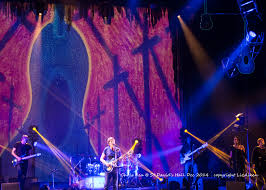 Think jazz is just a genre featured in movies from the 1960s? Think again. Take artist Kamasi Washington, for example. Last week, the Millennial jazz artist won the inaugural American Music Prize. He was also featured on Kendrick Lamar’s acclaimed To Pimp A Butterfly. And then there’s the Preservation Hall Jazz Band, who teamed up with Trombone Shorty to perform at the 58th GRAMMY Awards this year.
Think jazz is just a genre featured in movies from the 1960s? Think again. Take artist Kamasi Washington, for example. Last week, the Millennial jazz artist won the inaugural American Music Prize. He was also featured on Kendrick Lamar’s acclaimed To Pimp A Butterfly. And then there’s the Preservation Hall Jazz Band, who teamed up with Trombone Shorty to perform at the 58th GRAMMY Awards this year.
So with so much jazz in the air, we set out to learn more about jazz fans, particularly listeners aged 25-48, since they’re the ones driving the renewed interest in the genre. Our recent analysis found that while the jazz genre represents a small percentage of overall music consumption, jazz fans are digitally savvy consumers who are drawn to high-end brands and services.
While Nielsen’s 2015 U.S. Music Report found that jazz accounted for just 1.3% of total music consumption (physical album sales, digital track and streaming equivalent albums), jazz music listeners outspend the average music listener on digital music. In fact, in 2015 27% of jazz albums sold were digital and 46% were physical. Jazz music listeners are also active streamers, and show a greater willingness to pay for streaming services than the average music listener.
Forty-seven percent of jazz music listeners aged 25-48 say they might pay for streaming if it was a lower cost or had additional features compared to 41% of listeners of other music genres like country, EDM, rock, R&B, pop and hip-hop/rap. In addition, consistent with their digital tastes, young jazz listeners are more apt to discover music and music events through online channels like venue and event websites and make music purchases on a smartphone or a tablet. And they show heightened attendance across live music events, especially small music sessions.
Nielsen’s Audience Insights Report on jazz music fans (which focuses on listeners aged 25 to 48) shows that these young listeners tend to live in major metropolitan cities and skew 58% male. While they are predominantly white, they are twice as likely to be African-American as the average music listener. They also have a taste for the good life. These listeners are travelers, with a preference for high-end hotel chains, and a higher propensity to fly domestically on most major airlines in the past 12 months relative to other music listeners. They’re also fashionistas and are considerably more likely to buy designer jeans and shop at high-end department stores than other music listeners.
Female jazz fans are the most likely to prefer specialty cosmetics brands, offering strong partnership opportunities across fragrance, lipstick, nail polish and eye makeup products. When it comes to cars, this group ranks foreign car manufacturers highly and is more likely than others to shop for foreign made cars. Alcoholic beverages were also a favorite, with above-average usage across all types of liquor, craft and imported beer.
What does this mean for brands? Not only do young jazz music listeners represent an opportunity for upscale brands, but relative to other music listeners, this audience is responsive to music-based activations. Thirty-seven percent are more likely to view brands that sponsor live chats with artists on social media more favorably than other music listeners. Sixty-one percent say that free music downloads increase brand favorability. Overall, their music consumption habits closely resembles those of Millennials, but jazz fans show a greater willingness to pay for digital music than fans of other genres. Thus, digital music activations may be an effective way for brands to connect with a desirable audience of high-end consumers.


